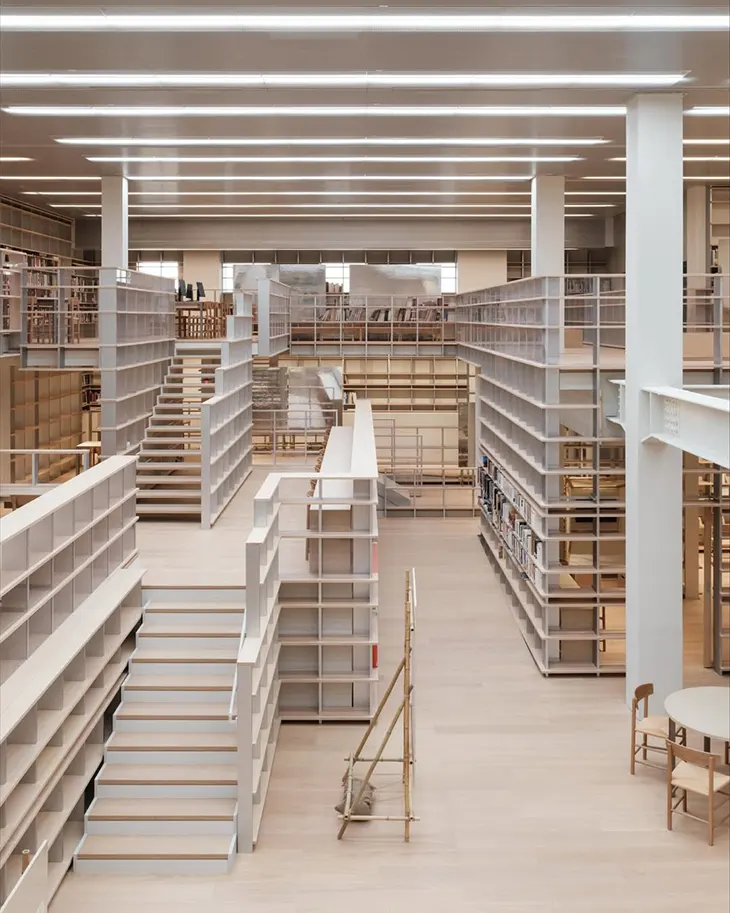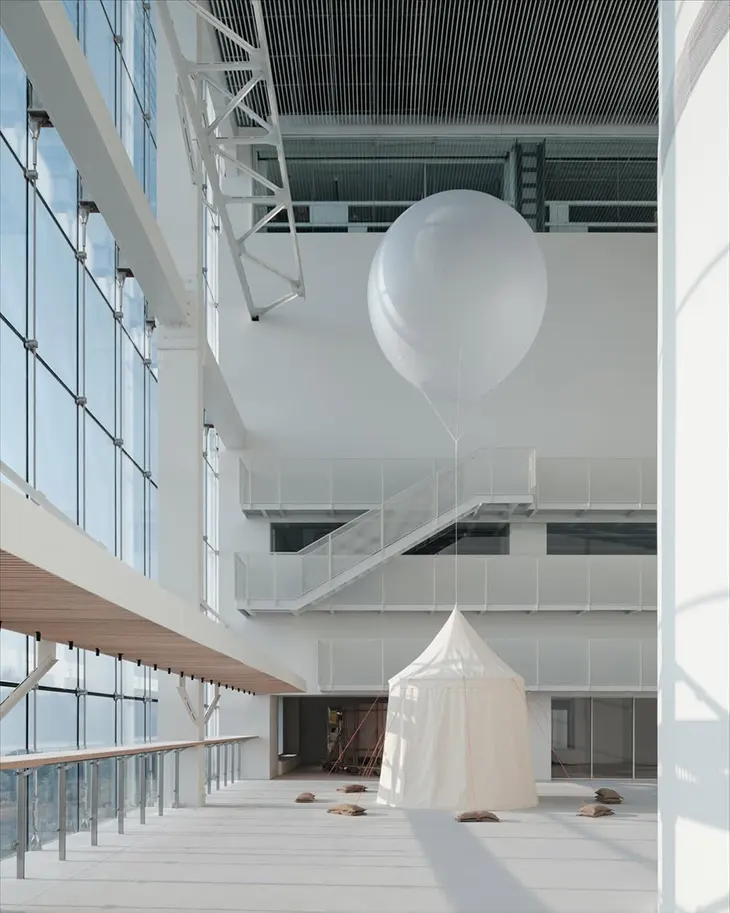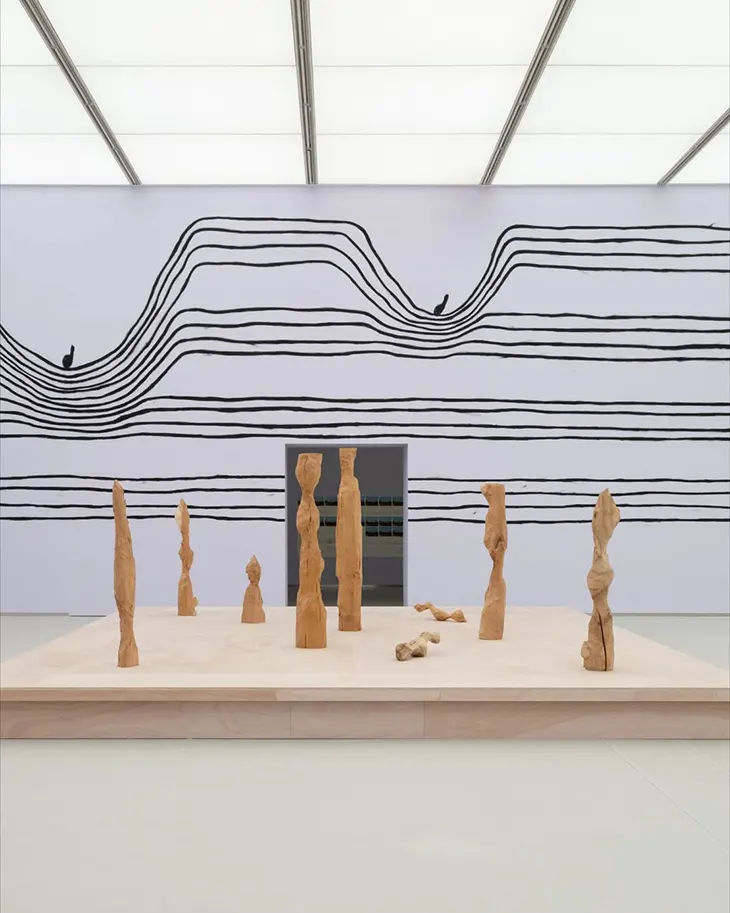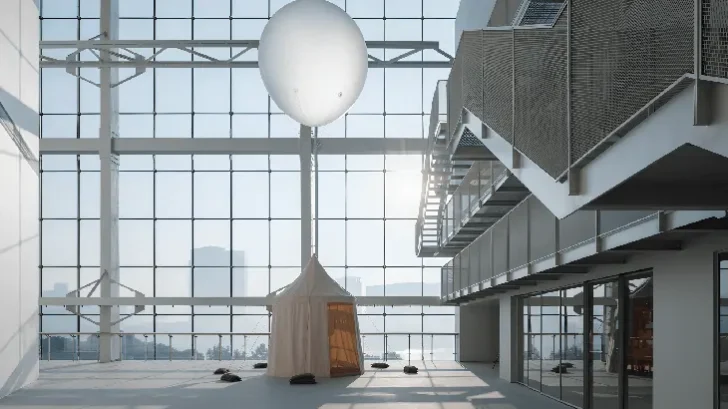
Espace Gabrielle Chanel, a new public library devoted to contemporary art, opens on the third floor of Shanghai’s Power Station of Art (PSA). Created with support from Chanel, the 18,000 square foot space offers a major resource for reading, research, and study, with more than 50,000 books and audio editions forming one of the largest contemporary art archives now accessible to the public in China.
Japanese architect Kazunari Sakamoto shaped the interior around movement and clarity. He transformed the former electric plant into a horizontal system of ramps, platforms, and shelves arranged as a continuous passage. This structure forms what he describes as a “valley of books,” a configuration that echoes the course of the nearby Huangpu River. The design uses elevation changes and long sightlines to carry visitors through the archive while keeping the industrial character of PSA intact.

The library expands PSA’s role as a contemporary art museum. Since the museum moved into the converted factory, it has broadened its program to include art, design, theater, and architecture. With Chanel’s support, PSA now extends its facilities to include the new library, as well as a theater, a design center, an upgraded exhibition space, and a terrace overlooking the river.
Espace Gabrielle Chanel represents the first major project by Chanel’s Culture Fund in Asia. Chanel began its partnership with PSA in 2021 through the Next Cultural Producer program, which supports emerging talent in Chinese craft, theater, and architecture. Chanel’s global head of arts and culture, Yana Peel, describes the new library as a continuation of this investment, noting that the brand focuses on collaborative projects with institutions. Chanel currently works with fifty cultural organizations around the world, including the Leeum Museum of Art in Seoul, MCA Chicago, Centre Pompidou in Paris, and London’s National Portrait Gallery.

The library gathers publications from museums, galleries, and cultural centers across Asia, along with a section dedicated to Coco Chanel. Its development took ten years, a period during which digital research tools expanded significantly in China. As a result, the archive includes a mix of print and e-book resources, giving visitors access to contemporary art, design, architecture, social sciences, literature, and craft in multiple formats.
PSA director Gong Yan describes the library as an essential addition to the museum’s educational work. She sees it as a tool that will strengthen PSA’s research capacity while offering visitors access to material that supports study and public inquiry. Gong also views the library as a step toward closing gaps between China’s contemporary art field and global discourse, noting the importance of giving the public access to accurate translations, documentation, and scholarly material. She emphasizes that the space is designed to serve both specialists and general visitors, treating the archive as an open cultural resource.

To inaugurate the library, PSA opened the exhibition “Home and Beyond,” curated by Hou Hanru. Visitors can register through PSA’s WeChat Mini Program or by email to access the first 10,000 books now available. As cataloging continues, the archive will expand section by section, establishing Espace Gabrielle Chanel as one of the most significant research points for contemporary art in China.



